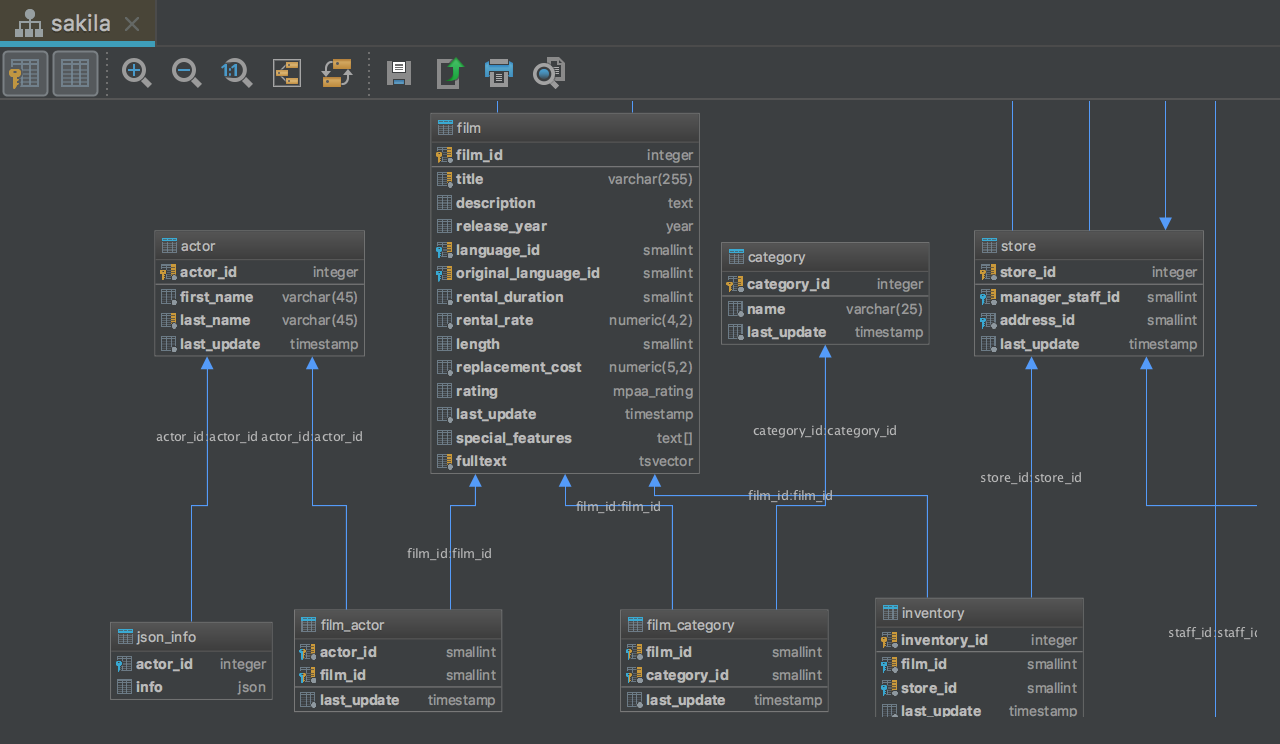

Database Editor – The powerful data editor lets you add, remove, edit, and clone data rows.It also provides a UI for adding and editing tables, columns, indexes, constraints, etc. Database Objects – DataGrip introspects all objects in your databases and displays them in folders grouped by schemas.It provides database introspection and various instruments for creating and modifying objects for the supported engines.
Bigquery datagrip driver#
If the DBMS has a JDBC driver you can connect to it via DataGrip.

What’s YugabyteDB? It is an open source, high-performance distributed SQL database built on a scalable and fault-tolerant design inspired by Google Spanner.
Bigquery datagrip how to#
In this post we’ll show you how to get DataGrip connected to a YugabyteDB cluster, use it to build a sample database, load it up with data and browse it. And because YugabyteDB is PostgreSQL compatible, getting DataGrip to work with a distributed SQL database is relatively simple. DataGrip from JetBrains is a well-rounded, visual database tool that supports almost 20 SQL and NoSQL databases from a single interface.
Bigquery datagrip plus#
Alternatively, in the attached directory, select all the files that are in the DDL data source, right-click the selection and click Reformat Code.If you’re a database developer, you know the time saving value of an IDE in helping you create and navigate database objects, plus query and edit data from single UI.
Bigquery datagrip code#
Ĭlick Code | Reformat Code or press Control+Alt+L to apply the declaration case in any file of the DDL data source. Select the dialect in which you want to apply the declaration case settings.Ĭlick the Case tab and select the Use original case checkbox. In Pack_2.sql, the case from the package declaration was applied throughout the whole file.Īpply the declaration case in multiple filesĬreate a DDL data source from the files for which you want to apply the declaration case. Pack_2.sql was reformatted with the Use original case checkbox enabled. On the following image, you can see Pack_1.sql and Pack_2.sql with identical code. Select the dialect in which you want to apply the original case from the declaration.Ĭlick the Case tab and select the Use original case checkbox.Ĭlick Code | Reformat Code or press Control+Alt+L. Open settings by pressing Control+Alt+S and navigate to Editor | SQL.

To apply the case in multiple files, create a DDL data source from these files. To apply this case throughout the file, DataGrip must find the declaration of these variables, procedures, and functions (for example, in the CREATE PACKAGE statement). For example, if you defined the get_Amount function in the CREATE PACKAGE statement, you want the same case throughout your code, not GET_AMOUNT or get_amount. SQL.Īpply the original case from the declarationĭataGrip can format names of variables, procedures, and functions as you defined them initially. For more information about code style settings, refer to Code Style. Open settings by pressing Control+Alt+S and navigate to Code Style | SQL | SQL:2016, Generic.Ĭlear the Inherit general SQL style checkbox.Īpply code style settings. Or, import settings from the dialect that you configured. You can select preconfigured styles like Modern, Joe Celko, Allman (DDL only)), Whitesmiths (DDL only)), Egypt, Old Idea. Alternatively, press Control+Alt+L.Ĭlick the Set from link and select the style that you want to import. Right-click any area or a selection of code in the editor and select Reformat Code. In the Code style drop-down menu, select a style that you want to apply. Right-click a data source and select Properties. Select all the necessary code style settings, and click Apply.Īfter you created a style for a dialect, you can apply this style to the data source that uses this dialect. Type a name for a new style, and press Enter. Create a code style for a dialectĬlick the Show Scheme Actions icon ( ), and select Duplicate. When you apply the rule, DataGrip updates the SQL code and highlights all modified parts in the preview pane.

Select all the necessary code style settings on the available tabs. Open settings by pressing Control+Alt+S and navigate to Editor | Code Style | SQL.Įxpand the SQL node and select a dialect. Change code style settingsĬustomize formatting rules for the SQL code: alignment, wrapping, and indentation. To see the description of SQL style options, refer to Code Style. You can apply and customize the SQL code style that satisfies code guidelines of your company.


 0 kommentar(er)
0 kommentar(er)
